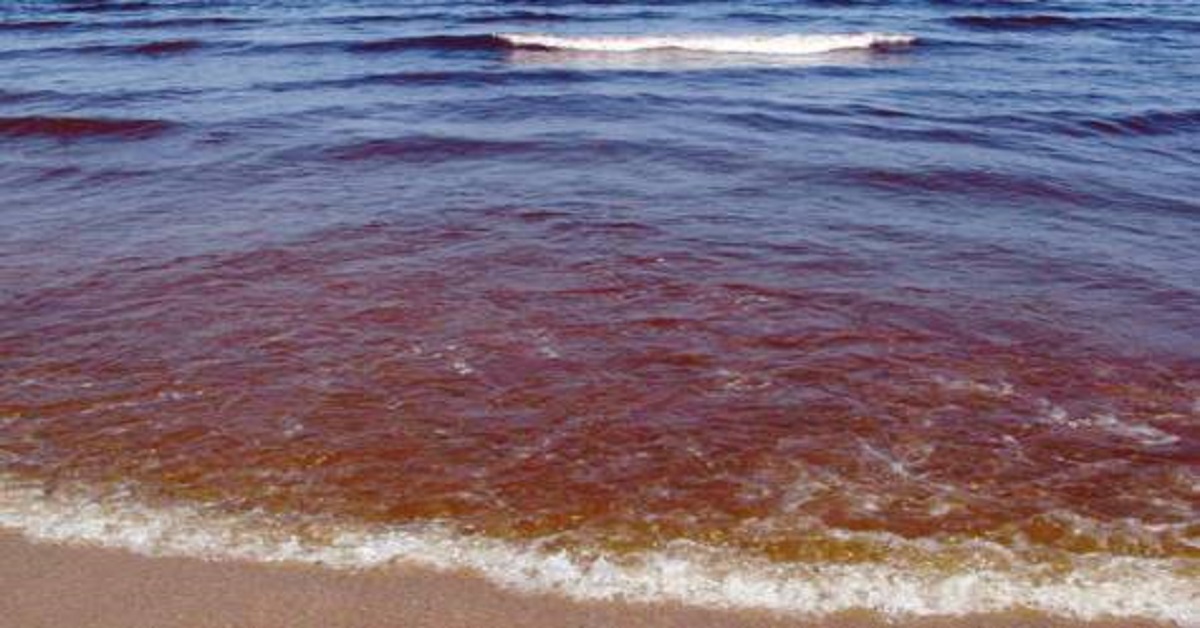
At times nature gives warnings to disasters that may or may not occur through silent climatic or environmental changes.
A red tide algal bloom has appeared along the UAE’s coastlines in the western regions, confirmed the Ministry of Climate Change and Environment on Wednesday.
The ministry has issued a call to commercial fishermen as well as beachgoers to avoid harvesting any fish or shellfish to eat to prevent any possible ingestion of toxic substances produced by colonies of algae in the red tide bloom.
The Ministry of Climate Change and Environment (MOCCAE) has issued a warning against fishing and swimming in the areas alongside the economic zone overlooking the west coast of the Arabian Gulf and the eastern coast of the Gulf of Oman.
“As certain types of phytoplankton can make marine organisms poisonous to humans, the Ministry urges fishermen and beachgoers to refrain from fishing and collecting shellfish for consumption in the areas of red tide. In addition, people with allergies are asked to avoid swimming in affected waters,” the ministry said in a statement.
READ ALSO: Fuel alternative in the Emirates, the next step to save environment
Ministry staff confirmed the bloom following an inspection report from Ras Al Khaimah Environmental Protection and Development Authority, the ministry said.
The RAK authority observed biological activity in the form of chlorophyll pigments in the local waters which “indicates the presence of phytoplankton, commonly known as algal bloom or red tide, in the areas alongside the economic zone overlooking the west coast of the Arabian Gulf and the eastern coast of the Gulf of Oman,” the ministry said in a statement.
To stem further problems, the ministry said it is following its National Plan for Red Tide Management by satellite monitoring of the marine environment in cooperation with the Regional Organization for the Protection of the Marine Environment.
“Satellite images have shown that the biological activity extended to the Indian Ocean and adjacent countries,” the ministry said.
Ministry specialists are taking water samples along the impacted coastline to identify the algae colonies.
Early results show the bloom contains “no harmful phytoplankton that causes the death of fish and other marine species has been observed.”
READ ALSO: Jammu-Kashmir’s scheme to protect the environment
United States-based National Oceanic and Atmospheric Administration (NOAA), a global authority on marine biology, said that red tide or “harmful algal blooms, HABs, occur when colonies of algae—simple plants that live in the sea and freshwater—grow out of control while producing toxic or harmful effects on people, fish, shellfish, marine mammals, and birds. The human illnesses caused by HABs, though rare, can be debilitating or even fatal.”
Red tide, said NOAA, is caused by “microscopic algae that produce toxins that kill fish and make shellfish dangerous to eat. The toxins may also make the surrounding air difficult to breathe. As the name suggests, the bloom of algae often turns the water red. But not all algal blooms are harmful. Most blooms, in fact, are beneficial because the tiny plants are food for animals in the ocean. In fact, they are the major source of energy that fuels the ocean food web.”
The algal bloom is the result of climate change and ensuing rise in seawater temperature. Other causes include the movement of sea currents and seasonal wind activity.
The Ministry employs latest technologies, such as remote sensors, satellite imagery, and digital modeling to locate a red tide and to predict its occurrence to take precautionary measures to reduce its adverse effects.

Post Your Comments